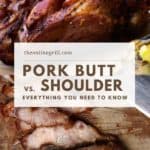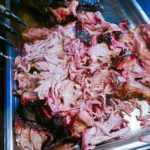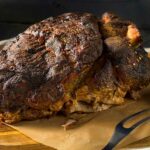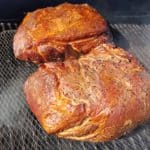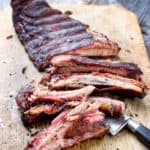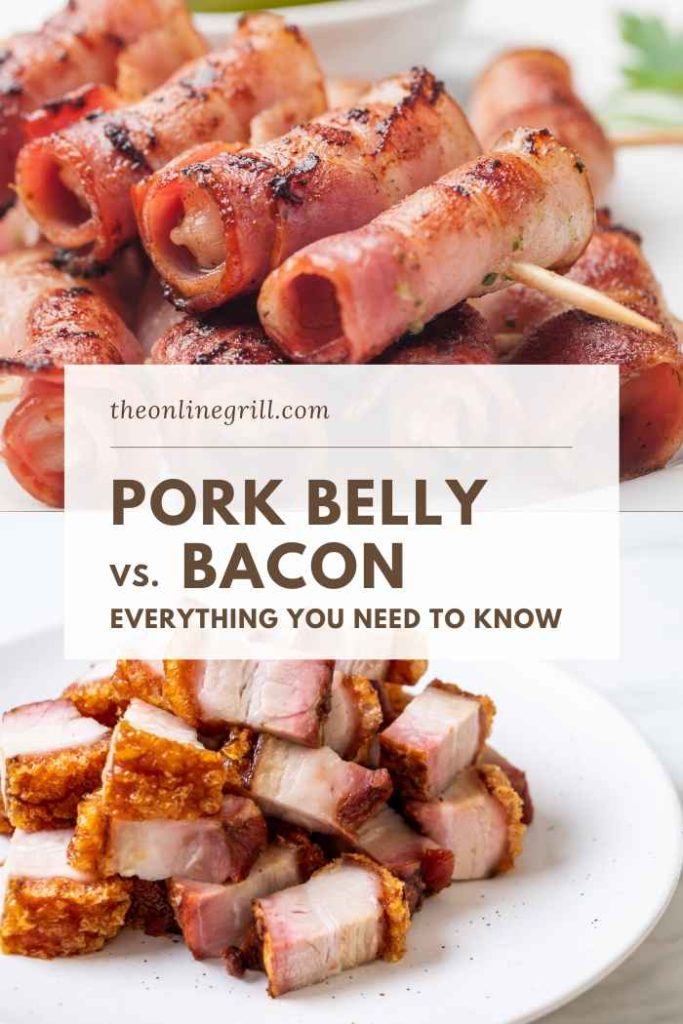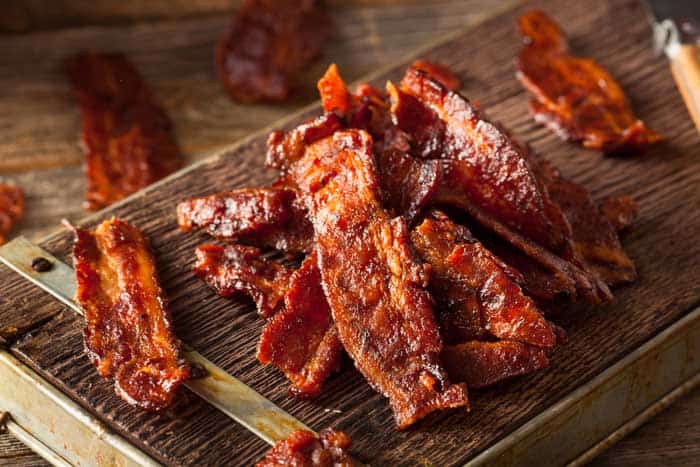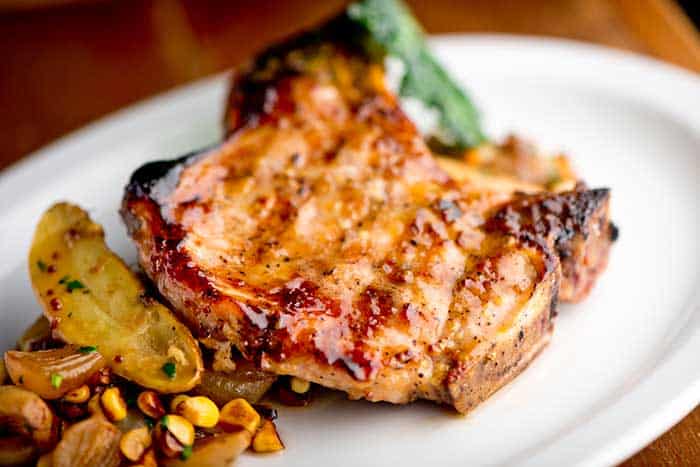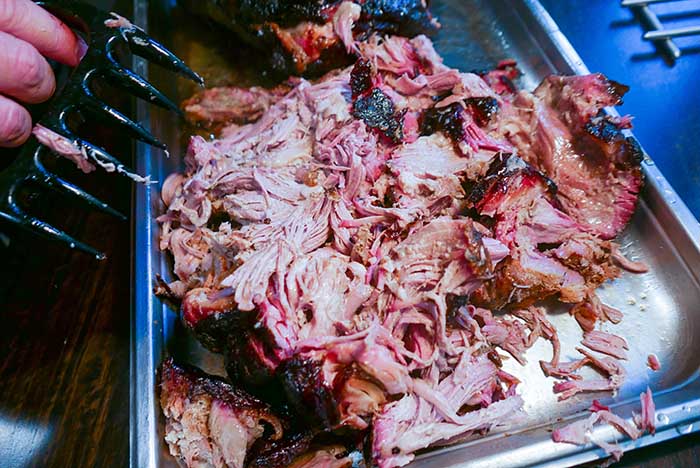Find out the big differences between pork butt and pork shoulder, and the best ways to cook them. BBQ pork recipes, cooking guides, and more.
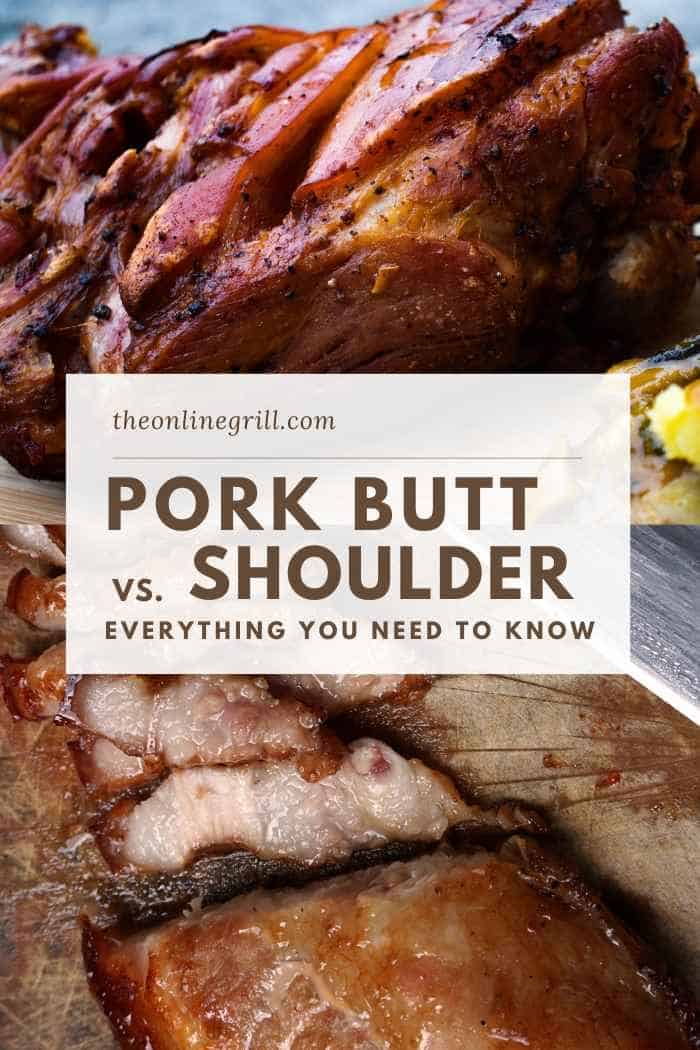
If the term ‘pork butt’ has confused you, then you are not alone. It doesn’t help matters that ‘pork butt’ doesn’t even come from the rear end of the pig, meanwhile pork shoulder only contains part of the pig’s shoulder.
Pork butt and pork shoulder originate from the same area of the pig – the shoulder, yet they differ significantly in their location and qualities. Located higher up, above the shoulder blades, is the pork butt, also referred to as Boston Butt. In contrast, the pork shoulder extends further down, reaching towards the pig’s front hooves. Though both cuts can be tough and fatty, necessitating slow-cooking methods like roasting, stewing, or braising, pork butt stands out for its higher fat content and marbling. This unique feature makes it the preferred choice for barbecue smoking. Therefore, while both cuts have their uses, pork butt often gets the nod for its superior tenderness and flavor when smoked.
In today’s guide we’ll walk you through the differences between pork shoulder and pork butt, when to use each of them, and everything you need to know to cook or smoke the best cut of pork possible.
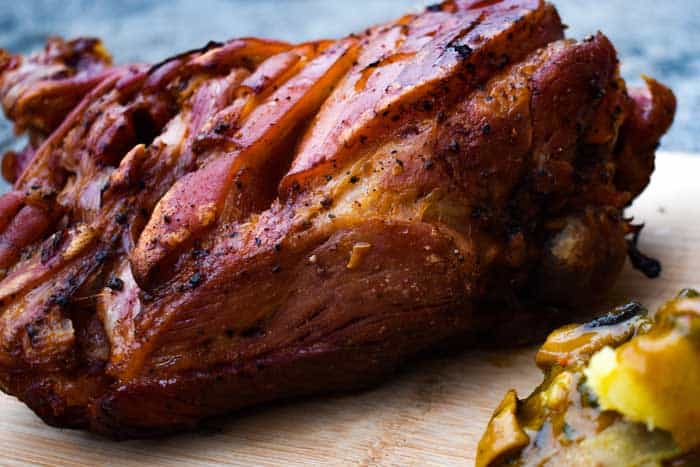
Pork Butt vs. Pork Shoulder: 3 Big Differences
Despite coming from the same area of the pig, there are three big differences between the two cuts of meat
Marbling and Fat Content
Pork butt contains a lot more fat content and marbling than regular shoulder (source).
In contrast, pork shoulder is far leaner and tougher.
Shape
Pork shoulder has an unusual triangular shape due to it running from the shoulder blades down to the pig’s hooves.
Butt only sits above the blades, and is more rectangular in appearance.
Uses
Because pork shoulder has more fat content, it’s perfect for slow cooking to make tender and moist pork. This makes it great for achieving the tear-away consistency that’s ideal for pulled pork.
Pork shoulder is tougher so is better for forming slices or shreds that are used in ramen or tacos.
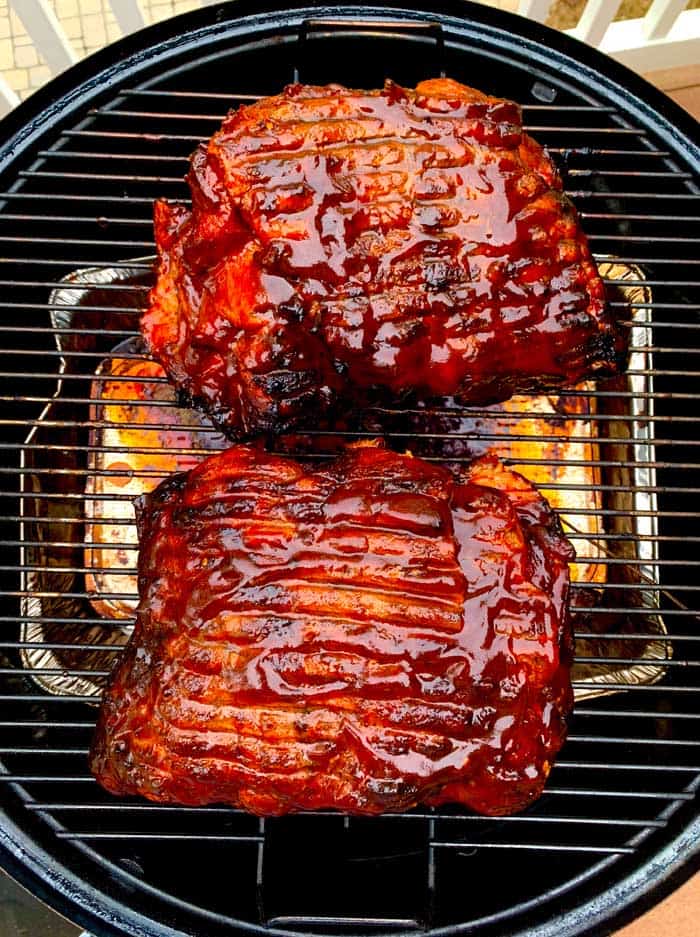
Where Do Pork Butt and Pork Shoulder From?
The best place to start with is where each of these cuts come from.
And this is where we can see where the confusion comes from.
See, both pork butt and pork shoulder come from (almost) the same part of the pig.
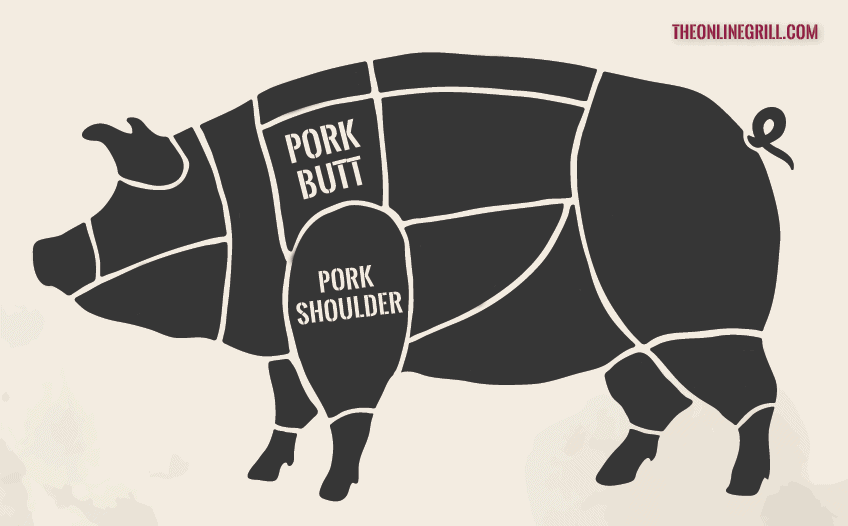
When butchers work on an animal carcass, they break it down into primal cuts. These are large portions of meat that are broken down into familiar cuts like tenderloin, spare ribs, and the shoulder section.
This front shoulder is then split into the two parts we now know as pork shoulder and pork butt.
The pork butt can be found right behind the pig head (source), sitting just above the shoulder blade.
So, despite being referred to as the butt, it comes from the front part of the pig (source).
The shoulder (also sometimes called the picnic shoulder) can be found right below the butt and sits at the top part of the pig leg. It then runs down towards the front hoof.
Even though they come from the same area of the pig, pork butt and pork shoulder have very different tastes and textures. This means that they have very different uses.
Knowing these differences will help you choose the best cut of pork for your next barbecue, and ensure that you cook the perfect bit of meat.
Let’s take a look at these.
What is Pork Butt?
Pork butt (also referred to as Boston Butt) is a prime pork cut that sits firmly behind the pig’s head and above the shoulder blade.
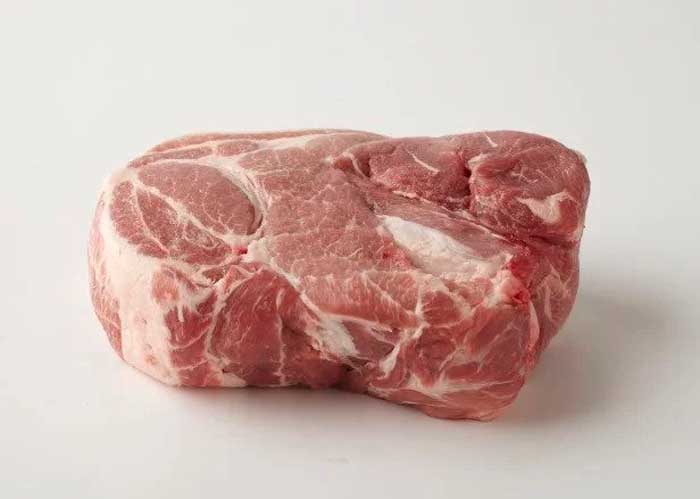
Raw pork butt has beautiful marbling across its surface. This is the white marks and flecks that you often see on the surface of red meat, particularly beef, pork and lamb.
Sometimes referred to as intramuscular fat, marbling can help enhance flavor of meat when smoked low and slow. Cooked for hours at low heats, the fat can render and infuse the meat with added flavors and moisture.
This means that you can get a delicious, tender cut of pork when you smoke Boston butt.
Pork butt doesn’t have to be smoked though. You ask your butcher to cut the butt into steaks with the bone removed, perfect for grilling. You can even have it sliced into thin strips or chunks for you to use in a ramen or stew.
What is Pork Shoulder?
Pork shoulder (also called picnic shoulder) is located right below the pork butt, and runs from the shoulder blade of the pig all the way down to the front hoof.
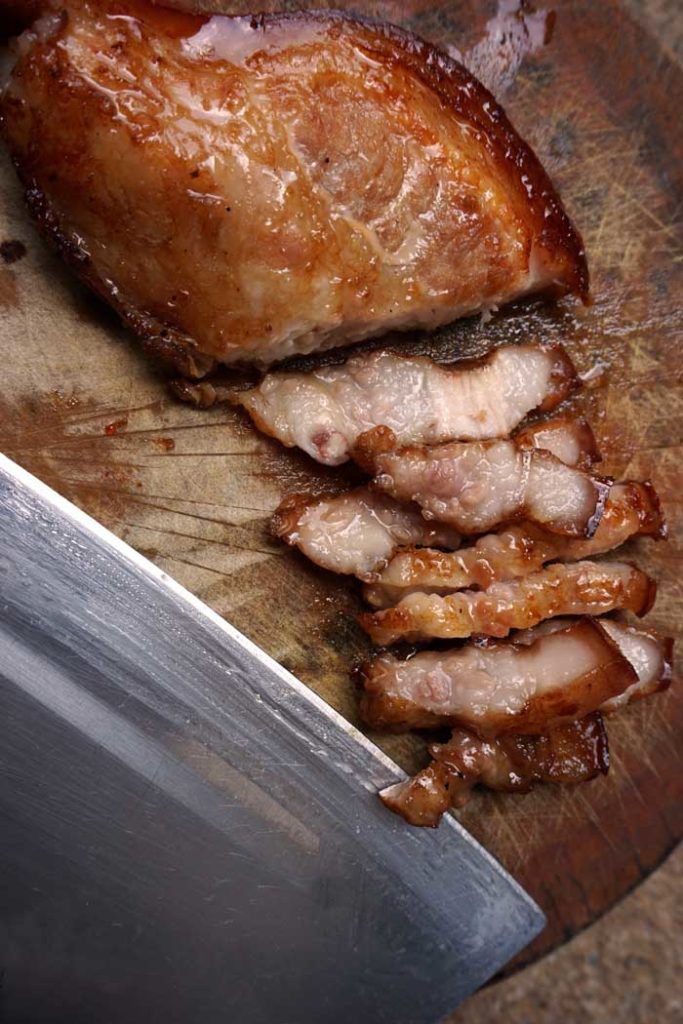
Its texture is very different to pork butt. It’s a far denser and tougher cut of meat and doesn’t contain as much marbling. This is because the shoulder is a well-used muscle, so contains a greater muscle-to-fat ratio than butt. Pork cushion also comes from this same portion of meat, which is why it carries quite a lean and tough texture.
The tough composition of pork shoulder means that it needs to be cooked low and slow. This will help prevent it from drying out and becoming too tough to eat. Pork shoulder often also requires brining as part of meat prep to help lock in as much moisture as possible.
Pork shoulder is often sold with the skin still on. You can remove this, but you can also leave it on and sear it after cooking or smoking. This will give you a beautifully crisp outer layer to your pork.
Both pork butt and pork shoulder have very different characteristics, so it stands to reason that one is better suits to certain pork recipes over the other.
Here’s my breakdown for when to use each one.
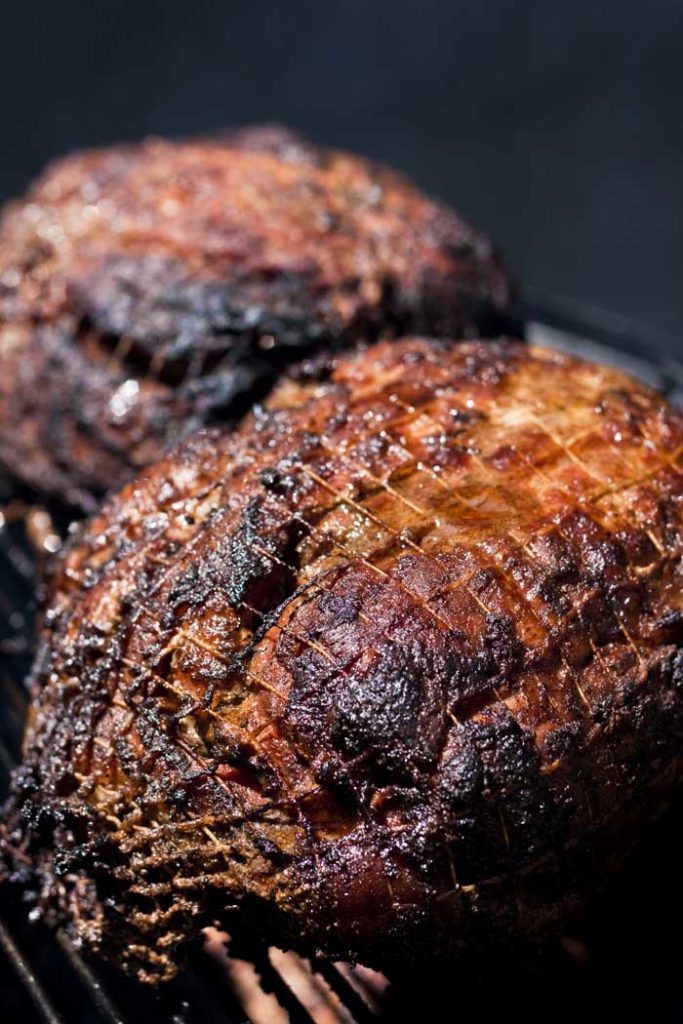
When to Use Pork Butt
The fat content of pork butt means that it’s perfectly suited to most forms of slow cooking, including barbecue smoking. This also includes roasting, stewing, and braising.
In all cases you should be left with beautifully tender meat that you can easily pull apart.
So it should come as no surprise that pork butt is perfect for pulled pork.
Many pulled pork recipes call for prime cuts of pork shoulder, but I would strongly recommend going for pork butt. The marbling in the meat makes it far better suited to producing the tender meat that’s needed for good pulled pork.
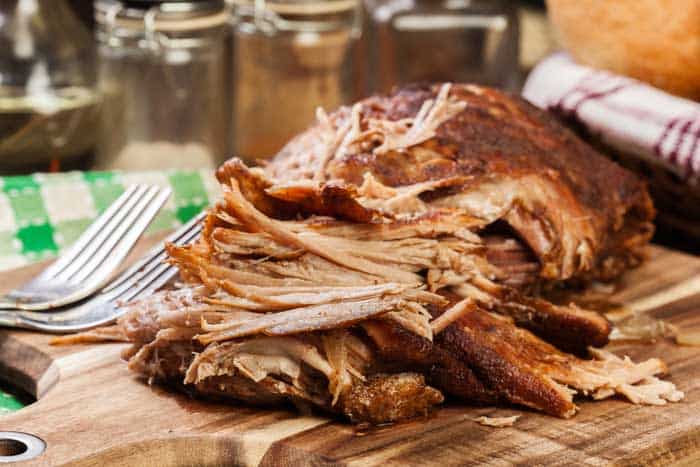
When to Use Pork Shoulder
Pork shoulder absolutely has its uses. It can be a bit trickier to cook, but if you get it right then it’s a thing to behold.
While pork butt might be the best choice for pulled pork, pork shoulder is best if you want a bit of crisp to your meat.
With the skin left on, pork shoulder is perfect for pork crackling or skin.
It’s also great for low and slow cooking, but particularly for reverse sear methods that require you to finish the meat on a high heat. This gives you a tender inside with crisp outside.
Pork shoulder is great if you need a firmer cut of pork. For example, pork strips for ramen or posole, or as a filling for tacos or posole.
If pork butt is your bulk go-to low and slow meal, pork shoulder is your more unique, out-of-the-box meal. Pork shoulder is good for carnitas, char siu, and as a whole roast.
